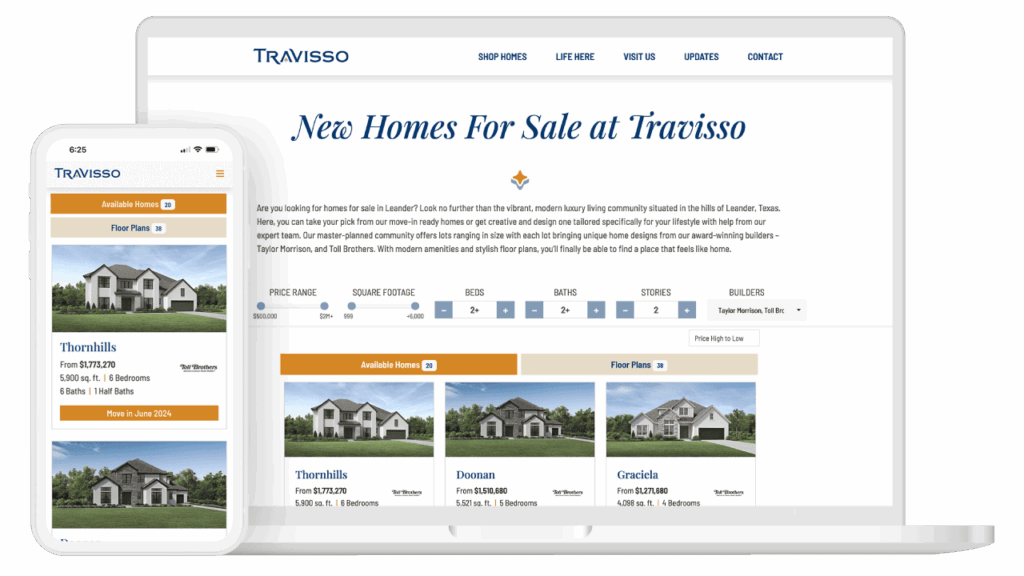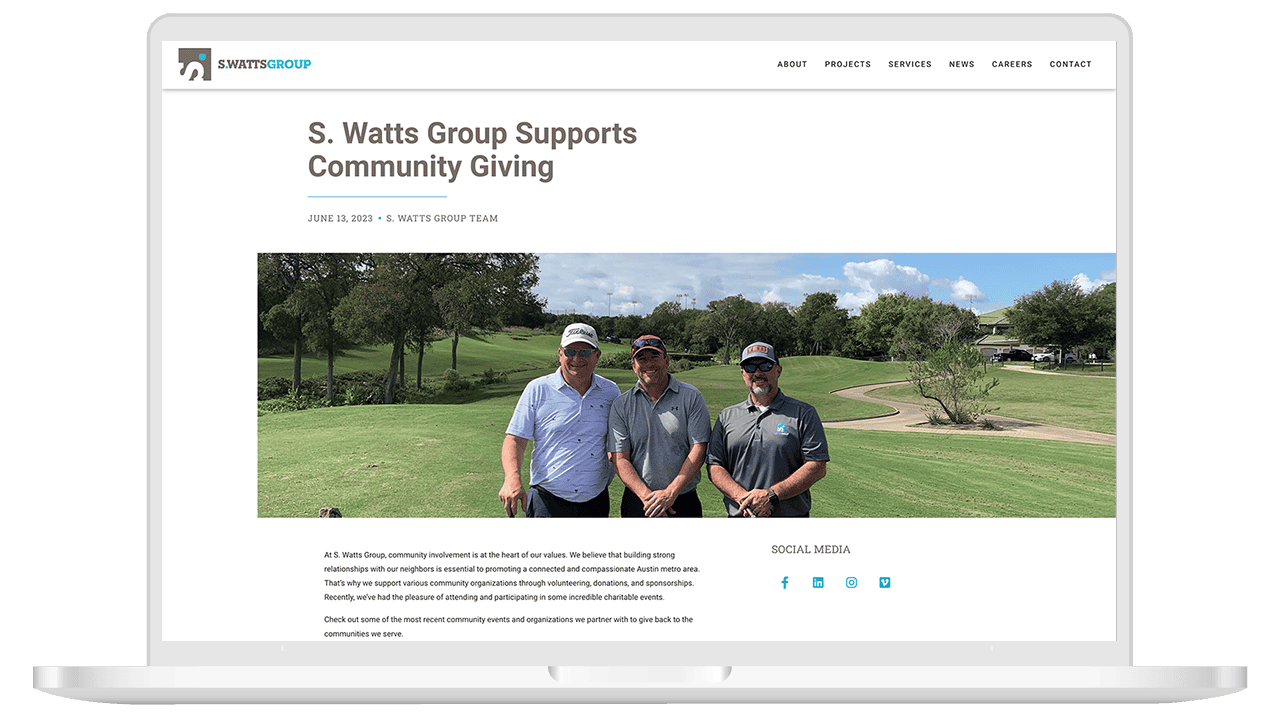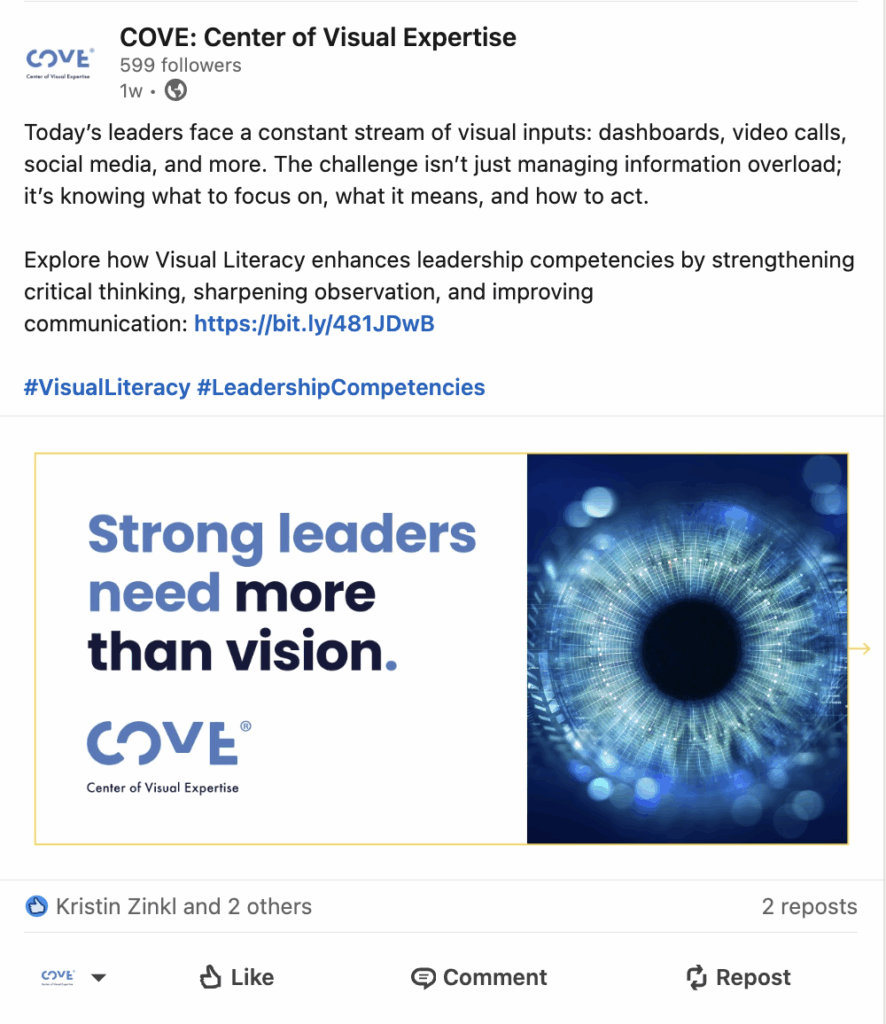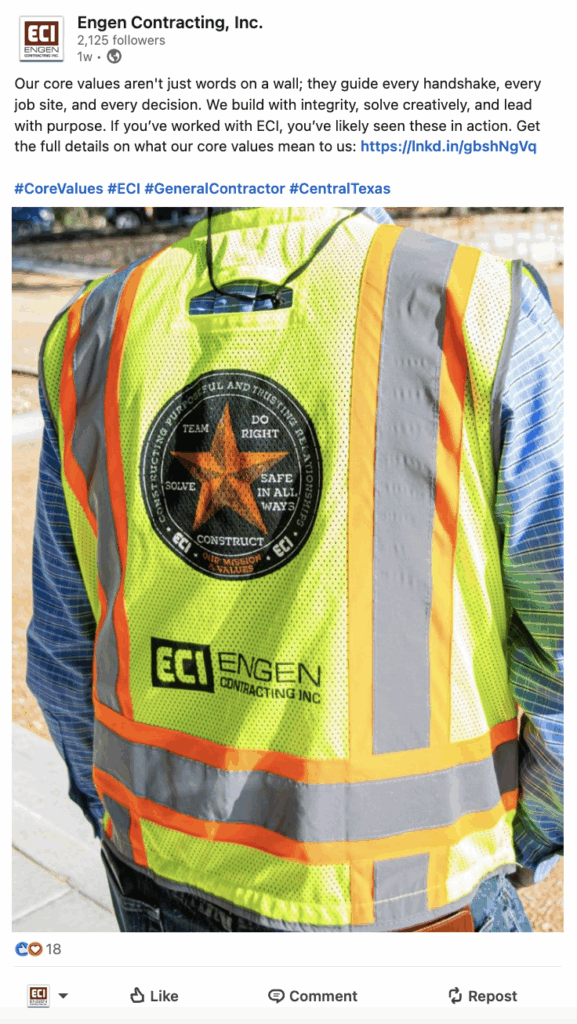If your audience doesn’t understand your story, they won’t understand your solution. This is also true in B2B marketing. And without empathy, without first acknowledging their reality, they won’t truly see you or trust what you are selling either. The truth is that complex products and services (especially in niche or technical industries) are often challenging to communicate in a way that is not only clear but compelling. This is where storytelling and empathy become a competitive advantage. Behind the business lens, the decision makers are humans, not flawless logic machines. To a human, data and features are expected, not persuasive, and only brands that connect to lived challenges can build trust.
As a new graduate emerging into the digital marketing agency world, I regularly see firsthand just how much audiences crave authenticity and purpose. Marketing is not just about visibility, but about creating relationships that resonate, inspire trust, and make both people and brands feel seen.
Em·pa·thy
/ˈempəTHē/ noun
The ability to understand and share the feelings of another.
Empathy isn’t soft, it’s strategic. It’s the ability to see your audience’s world clearly enough to speak their language, not just your own. Empathy translates complexity into connection. It’s how understanding becomes influence.
What does this mean?
In B2B digital marketing, companies aren’t just selling products; they’re selling clarity, trust, and solutions to complex problems. When we say “complex,” I mean services that are layered, technical, or difficult to explain in a way that feels relatable. These are the kinds of offerings that require not only understanding but empathy before a connection can happen. That’s where storytelling comes in.
Complex services, those filled with data, systems, or industry jargon, can often feel distant or impersonal. Empathy steps in to close that gap by helping brands see the service through their audience’s eyes. Storytelling then translates that understanding into language, imagery, and narratives that make the abstract feel accessible and meaningful. In essence, empathy gives storytelling its direction, and storytelling gives complex services their human side.
At Seventh Scout, we’ve seen how a well-crafted narrative can turn even the most intricate service into something approachable and meaningful. Storytelling bridges the gap between what a company does and how an audience feels about it. It translates technical expertise into real-world impact, which turns metrics, platforms, or strategies into stories about people, progress, and possibility.
Why Storytelling Matters in B2B
In B2B marketing, storytelling isn’t just fluff; it’s a function. Even in the most technical industries, where services are dense with data and processes, a story can translate complexity into something people can actually feel and remember. Decision-makers may be evaluating metrics, but what truly drives them is understanding. When a business can clearly communicate why it exists, who it helps, and how it makes a difference, it transforms from just another option into a trusted partner, which is the cornerstone of impactful storytelling for brands.
A clear narrative does what a feature list can’t: it connects logic with emotion. It takes what’s layered and abstract and gives it shape, meaning, and context. The goal isn’t to oversimplify or “dumb down” a service; it’s to remove friction in understanding. Because clarity builds confidence, and confidence drives decisions.
We see this in practice all the time. Buying a home, for instance, is an incredibly complex process, but Travisso’s website tells a story about belonging and lifestyle, not paperwork and square footage. Or take S. Watts Group, choosing a contractor can feel overwhelming, yet they share their story of craftsmanship, trust, and partnership, helping clients see not just what they build, but why it matters.


Storytelling turns transactions into relationships. It bridges the space between what you do and what your audience feels. And in a world crowded with competition, that bridge is what makes a brand stand out and stay in people’s memories.
Empathy as the New Competitive Advantage
Empathy in marketing means more than understanding what your clients do; it’s understanding what they go through. It’s seeing their challenges, emotions, and goals before trying to sell them a solution. That shift from talking at clients to talking with them turns marketing into a relationship rather than a pitch.
Audiences today respond to messages that recognize their pain points, not just the features that claim to solve them. Features are easy to compare; empathy is not. It’s what helps a business say, “We see you,” before saying, “Here’s what we can do for you.” In markets where nearly everyone claims to be innovative, empathy is what sets a brand apart. It’s the difference between being seen as a replaceable vendor versus being seen as a trusted partner. Because the truth is, even in B2B, it all comes down to human interaction.
Implementing Practical Strategies for Empathetic Storytelling
Turning empathy and storytelling into practice means grounding your message in clarity, connection, and human relevance. It’s not about inventing a story; it’s about uncovering the one that already exists within your work and telling it in a way your audience can see themselves in. Here’s how to bring empathetic storytelling to life:
Simplify with Clarity
Complex services can lose people fast. The goal isn’t to water them down, but to make them accessible. Break down layered offerings into easy-to-digest messages that focus on the “why it matters” before the “what it is.”
New Meridian’s explanation of “through-year assessment” effectively demonstrates this principle. They avoid opening with technical terms like interim assessment models or federal compliance. Instead, they start with what it means for people:
- Teachers get real-time insight to adjust instruction.
- Parents gain meaningful visibility into progress without added stress.
- State leaders receive data that improves policy decisions.
Only after clarifying why it matters do they explain the technical process. The complexity isn’t reduced; it’s translated into accessible meaning that grounds the reader before introducing details.
Use Visuals and Emotions
People process visuals faster than text, and emotions faster than logic. Use visuals like charts, infographics, or short videos to simplify processes and illustrate impact. Instead of lengthy paragraphs about systems or workflows, demonstrate how they connect. Highlight the human side of results, who benefits, what changes, and why it matters.\
Engen Contracting Inc.’s performance “bento box” demonstrates how visuals can turn information into quick, digestable impact. Instead of showing quarterly metrics as plain text, it uses:
- Color to highlight key changes.
- Layout to organize data clearly.
- Simplicity to make insights easy to grasp.

Key metrics such as SEO gains, social engagement, and keyword growth relevance become immediately understandable. The result is more than a data report; it’s a story of progress and purpose. This approach proves that even performance metrics can express momentum, pride, and the human effort behind every percentage point.
Center the Audience
Empathetic storytelling starts with listening. Before talking about what your business does, acknowledge what your clients are facing. Ask questions, use their language, and frame your solutions in the context of their world, not yours. When people feel seen, they are more willing to engage and trust what comes next.
COVE’s post demonstrates empathetic storytelling by starting with the audience’s reality rather than its own services. Instead of leading with what they offer, they acknowledge a universal challenge leaders face. This framing signals understanding relevance right away by:
- Speaking directly to the audience’s pain points and using digestible language.
- Positioning itself as a partner, not just a provider.
- Shifting from “here’s what we do” to “here’s what you need.”

The result is a message that feels helpful, human, and trustworthy. This approach shows how brands can stop speaking at people and start connecting with them.
Purpose-Driven Messaging
Purpose-driven messaging bridges the gap between what you sell and what you stand for. Today’s audiences, especially younger professionals, care deeply about authenticity and alignment. They want to partner with brands that not only solve problems but also share their values.
Talk about the “why” behind your work. What mission drives your team? What kind of change do you want ot create? Empathy and purpose together turn marketing from persuasion to partnership, where both sides feel seen, respected, and inspired.
Engen Contracting Inc.’s post adds a human element to what could have been just another corporate message. Instead of listing their core values, they show them in action through people who live and lead by them. The photo of a worker’s vest goes beyond branding; it’s a form of storytelling. It communicates that integrity, safety, and teamwork aren’t just buzzwords but promises you can count on.
By sharing why their values matter and how they guide with every handshake, job site, and decision, ECI demonstrates empathy and authenticity. The post reminds the audience that ECI’s work is built on more than concrete and steel; it’s built on trust.

Takeaways for New Marketers
For new marketers entering the B2B world, empathy and storytelling are your competitive edge. The ability to humanize complex services and translate technical language into real meaning sets you apart early in your career. Lead with empathy and creativity, go beyond features and benefits, and focus on how your message makes someone feel seen. Practice storytelling, listen for client insights, and experiment with various formats to discover what resonates.
Modern marketers are already trained to think audience-first and human-first. Purpose, emotional literacy, and clarity aren’t “soft skills”; they’re growth drivers. You bring what many established organizations need most: the ability to translate and listen.
At Seventh Scout, that same mindset defines how we approach every client relationship. The agency markets with relationship-first logic, proving that empathy and simplicity drive deeper engagement than any flashy campaign ever could. It’s not about noise or novelty; it’s about making meaning clear, human, and memorable.
As Lynn, the owner of Seventh Scout, shared in our first meeting:
“We’re an agency of conversation starters, not order takers. We want a seat at our clients’ table because that’s where we learn their thought leadership, their passion, and their purpose. From there, it’s our job to connect those solutions with the right audiences in the moments, places, and language they’re already seeking.”
Lynn Yeldell
That philosophy builds partnerships that last, helping clients win not just at launch, but long term. In a world full of technical jargon, the brands that connect emotionally will always stand out.




